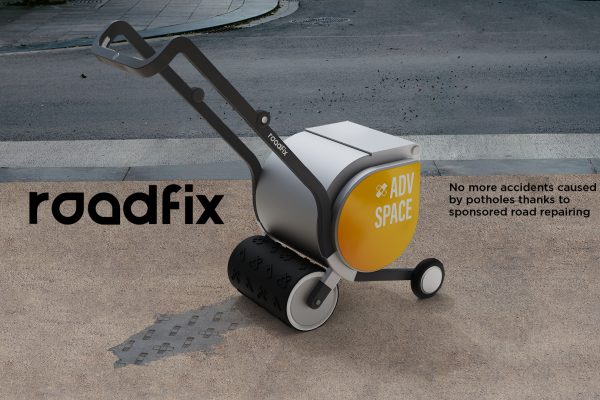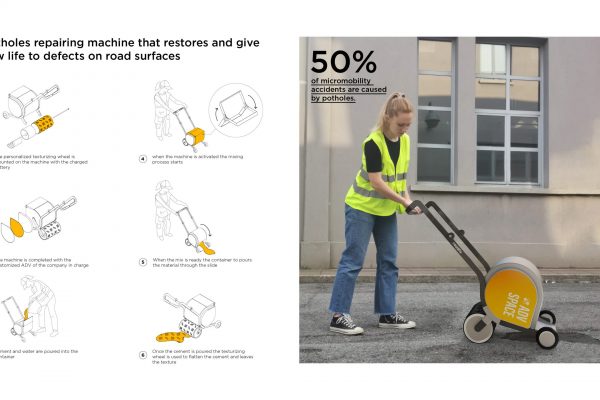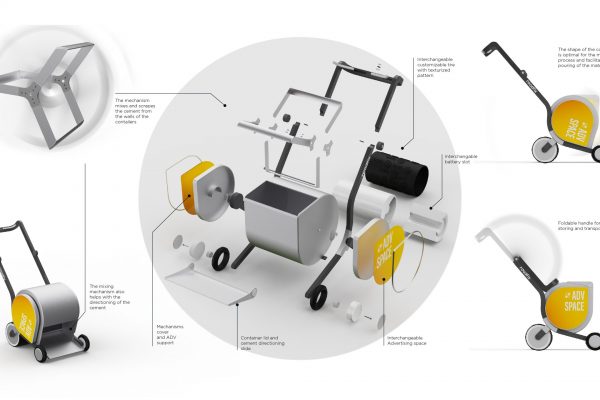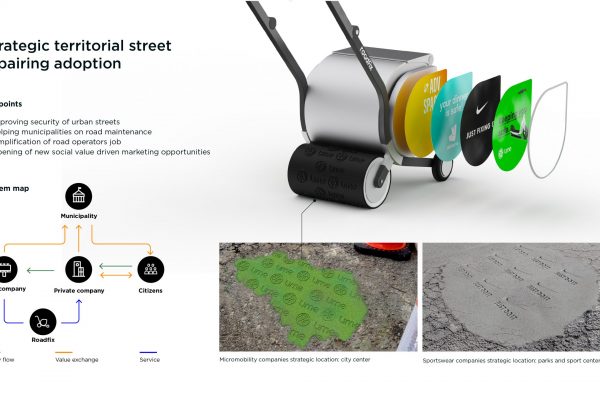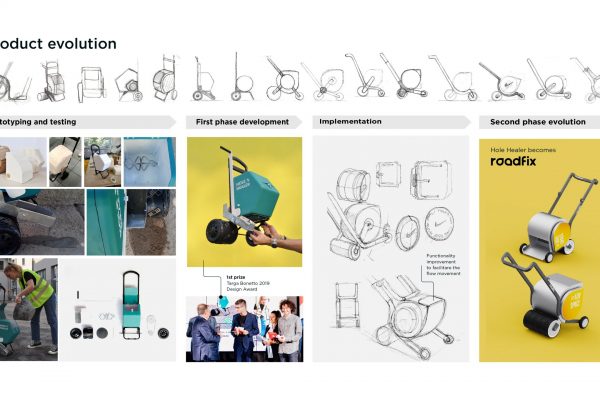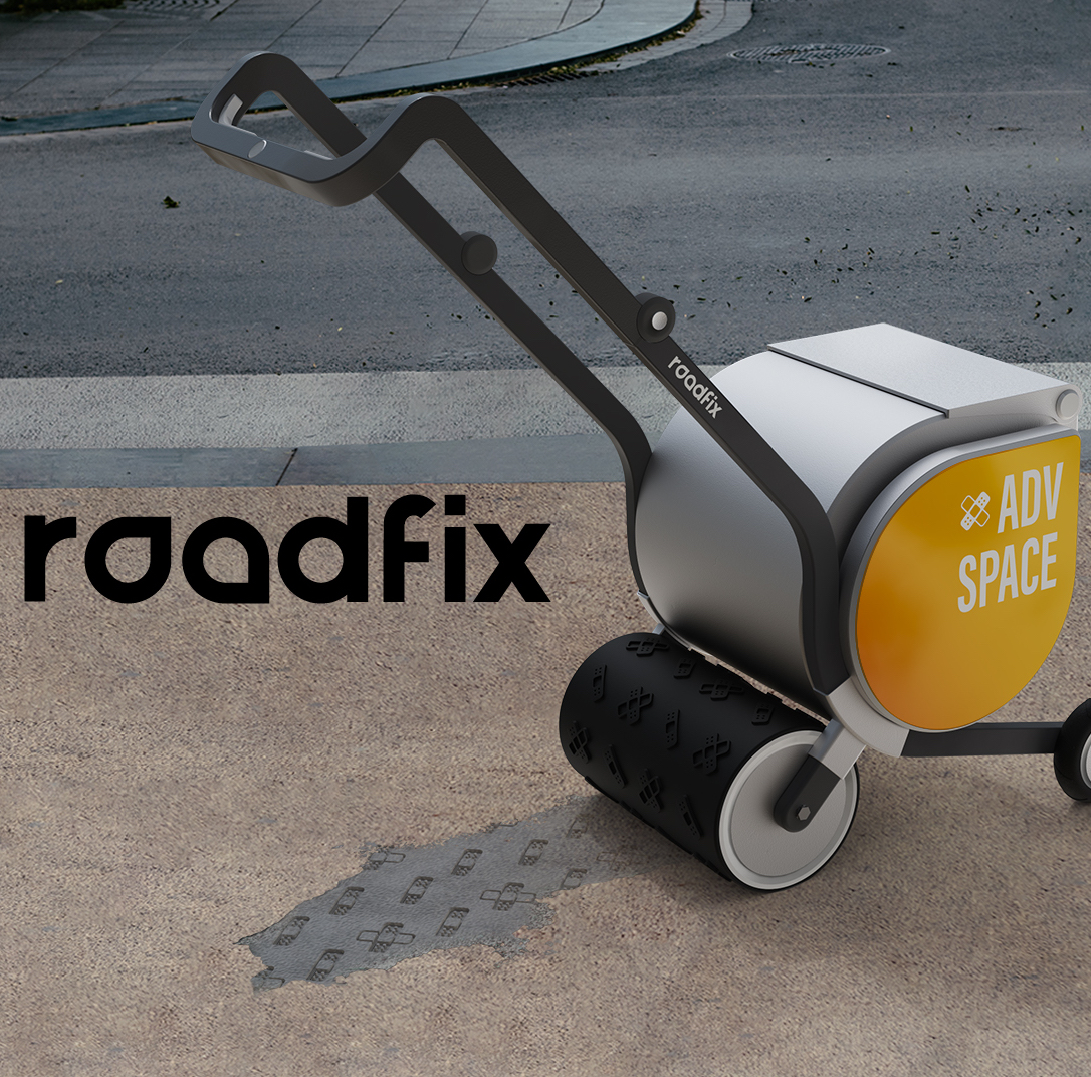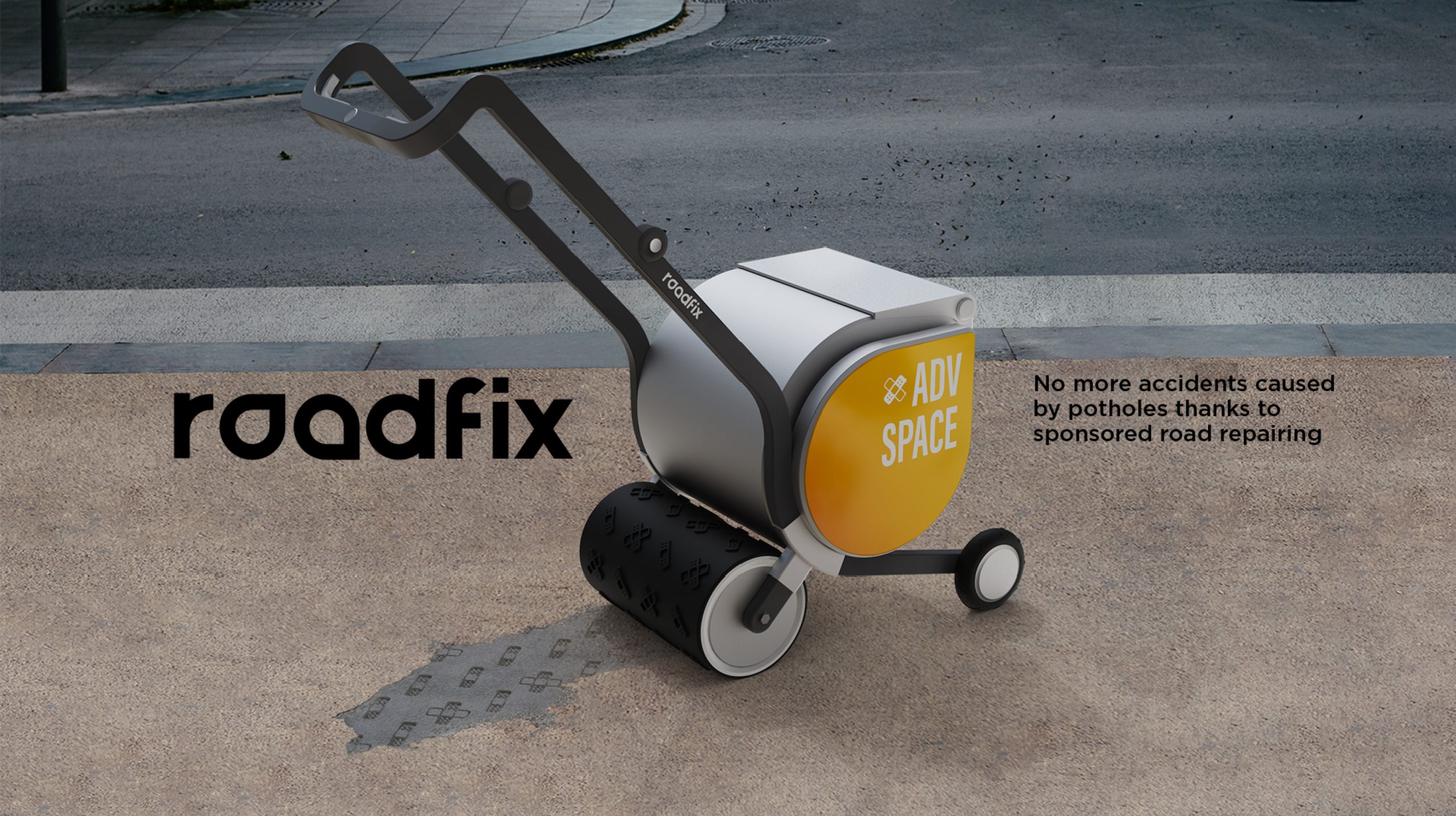
Alessio Puleo, Silvana Migliozzi, Luca Grosso
Premio James Dyson – Vincitori nazionali
Lo strumento ripara piccoli difetti sul manto stradale offrendo anche spazi pubblicitari per le aziende imprimendo il loro logo sulla buca e sponsorizzando la riparazione al fine di fornire benefici alla comunità, guadagnando allo stesso tempo un valore economico e di immagine.
Nel rapporto 2020 di Marsh; gli incidenti dovuti alla cattiva manutenzione delle strade sono la prima causa di costi nei comuni. Secondo i dati GHSA, nel 2020, le buche sono tra le principali cause di incidenti, soprattutto con la micro mobilità. L’idea di Roadfix nasce da questi disagi con l’obiettivo di migliorare la sicurezza stradale; semplificare il lavoro degli operatori; aprire nuove frontiere di marketing. L’ispirazione viene dall’arte giapponese del Kintsugi, ovvero riparare oggetti rotti con l’oro per valorizzare le crepe e dare loro una nuova vita. Il concetto è quello di valorizzare i difetti stradali per renderli risorse per la città.
All’interno del contenitore, l’acqua e la polvere di cemento vengono mescolati attraverso una frusta azionata dal motore elettrico all’interno della ruota posteriore. Una volta che la miscela è pronta, l’operatore ruoterà il contenitore in avanti utilizzando il pulsante dedicato sulla maniglia, mentre con l’altro pulsante aprirà il coperchio per far fluire la malta verso il difetto. Spingendo Roadfix in avanti la ruota posteriore compatterà la malta e imprimerà la texture sul terreno. Attraverso il battistrada personalizzabile, le aziende saranno in grado di posizionare il loro logo sulla gomma in modo da poter imprimere una texture sulla toppa. Inoltre, approfittando delle coperture laterali, potranno inserire una grafica per avere visibilità anche durante la riparazione del manto stradale. Oggi è il Comune che si occupa dei costi di riparazione delle strade ma attraverso questa nuova opportunità sarà possibile trovare aziende disposte a farsi pubblicità migliorando e aiutando le nostre città.
L’idea iniziale del progetto è nata durante il Laboratorio di Concept Design del Politecnico di Milano nel 2019 da un gruppo di studenti formato da: Luca Grosso, Silvana Migliozzi, Alessio Puleo, Zöe Schnegg e Xueyan Niu. Nel corso del laboratorio, dopo una prima fase di ricerca e sviluppo delle idee, il concetto è stato sviluppato con un modello di studio e testato per capire l’ergonomia, le proporzioni e il lavoro dell’utente. Inizialmente era stato pensato per essere totalmente analogico, in quest’ultima versione invece, è stato integrato con una batteria e un piccolo motore elettrico per alleggerire il carico per l’utente e anche per migliorare notevolmente le prestazioni nella fase di miscelazione e stesura della malta e anche la forma del contenitore è stata ridisegnata per rendere il prodotto più funzionale e iconico. I pulsanti operativi sono stati posizionati sul manubrio in modo da avere il massimo controllo da un unico punto. La ruota posteriore, inizialmente posta lateralmente, è stata riposizionata al centro per avere una migliore stabilità e per dare maggiore forza durante il livellamento del calcestruzzo. Sono state poi aggiunte le due coperture laterali per offrire all’azienda che si vuole pubblicizzare una maggiore visibilità anche durante le operazioni di riparazione.
Lo scopo del progetto è quello di risolvere il problema dei difetti stradali creando un servizio di prodotto permettendo alle aziende di pubblicizzare il loro marchio attraverso le riparazioni stradali imprimendo il loro logo sul cemento. In questo modo, a loro spese, contribuirebbero ad aiutare le città, specialmente ora che la tendenza della micro mobilità è in aumento. I piccoli difetti stradali sono spesso riparati con metodi non sempre convenzionali, per esempio con bitume freddo o caldo usando una pala per riempire e livellare. Questi metodi permettono riparazioni di fortuna che hanno una durata molto limitata nel tempo e danno un risultato estetico sgradevole. Roadfix permette di effettuare riparazioni più precise e sicure anche grazie all’utilizzo della malta bituminosa e non del classico catrame. Inoltre è stato effettuato uno studio ergonomico per offrire agli operatori uno strumento che possa essere più comodo, facile da usare ed efficiente.
Il prossimo passo è quello di creare un nuovo prototipo dotato di componenti elettrici per iniziare una nuova fase di test su strada e farlo provare ad alcuni operatori per capire più nel dettaglio le problematiche legate all’ergonomia e alla User Experience. Inoltre, sono state individuate aziende che operano su campi analogici, ad esempio: Aziende che vendono spazi pubblicitari; Aziende di micro veicoli per la mobilità; Aziende che producono cementi, colle e strumenti di lavoro; Aziende di abbigliamento sportivo e altro ancora.
